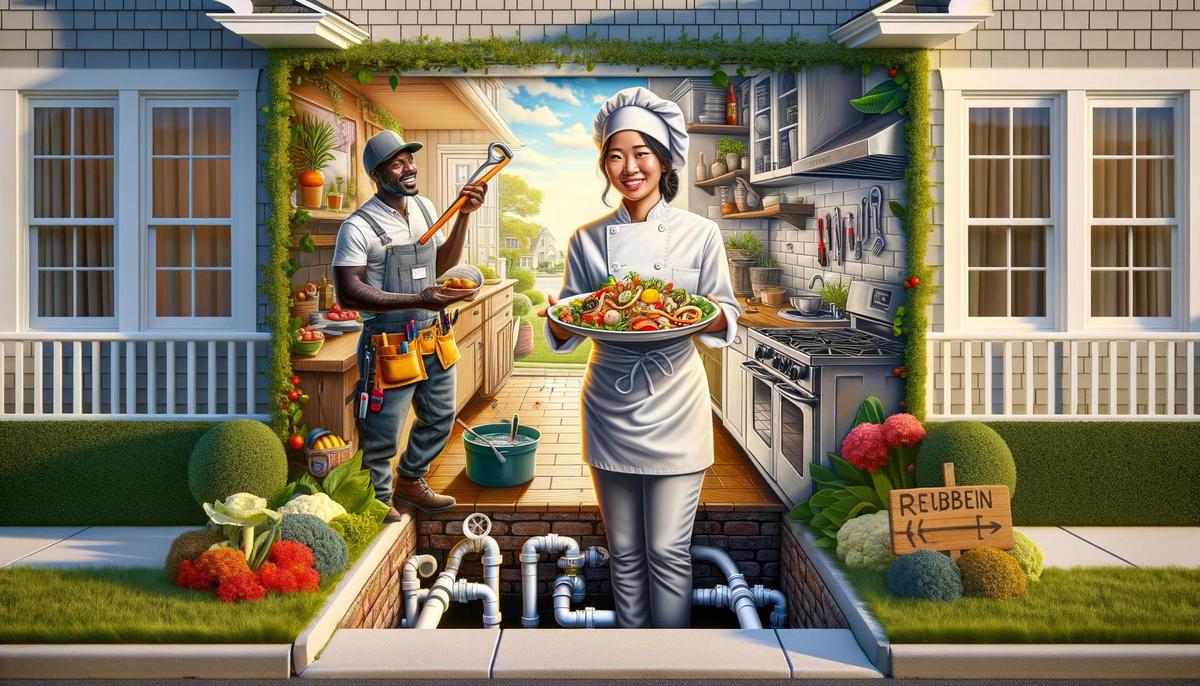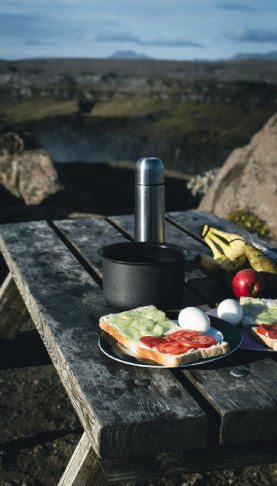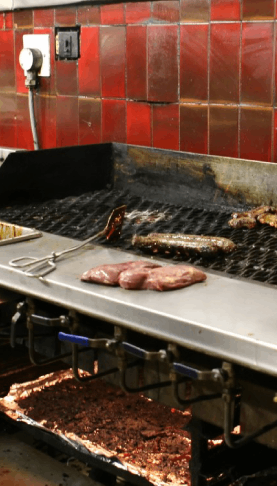Every restaurant needs reliable plumbing because your kitchen runs on water, heat, and clean drains. If any of those fail, service stalls, food safety drops, and guests notice. In Sherman, the stakes are higher than you might think. Soil shifts, hard water, and surprise freezes are common. So the simple answer is this: build a relationship with great plumber Sherman TX before you need them. I know that sounds basic. It is. But it is also the difference between a rush that hums and a rush that leaks, smells, and loses Friday night.
What reliable plumbing actually means for a restaurant
Reliable plumbing is not a nice-to-have backroom thing. It touches the plate and the guest. It is about hot water recovery at 6 pm, drain flow at prep time, and a dish machine that hits the required rinse temperature. A few points, quick and plain:
- Hot water at the right volume for dish, prep, and hand sinks
- Grease trap sized and serviced so it does not back up during peak
- Backflow preventers tested so your potable water stays safe
- Floor drains clear in cookline, bar, and mop areas
- Gas lines tight and venting correct for fryers, ovens, and boilers
- Water filtration matched to your ice, coffee, tea, and steam equipment
Healthy kitchens are not only clean. They move. Reliable plumbing keeps movement smooth and steady when tickets stack.
Most chefs I talk to do not think about this during menu planning. They should. Water hardness affects coffee and tea. Scale changes steam oven performance. Drain layout changes how fast a cook resets a station. It spills into guest experience more than you expect, which feels odd, but it is true.
The Sherman TX factor you cannot ignore
Sherman sits in North Texas with a few quirks that hit restaurants:
- Hard water is common. It scales dish machines, combi ovens, and ice makers.
- Clay-heavy soils move with rain and heat. That movement can stress underground lines and cause slab leaks.
- Storms arrive fast. Roof and area drains need clear paths. Kitchen floor drains must be ready.
- Hard freezes show up in some winters. Exposed lines and backflow devices are at risk.
I remember one winter when a cafe kept hot water by running taps overnight. It seemed clever at 2 am. It was not. The gas bill was silly and the backflow device still cracked on a windy corner. A good local plumber would have wrapped the device, checked the shutoffs, and set a better plan.
Sherman rewards restaurants that prepare for heat, rain, and the rare freeze. Your plumbing plan needs to fit this city, not a generic checklist from somewhere else.
What can go wrong in a kitchen, and how it hits service
Plenty can break. Some failures are small, some stop the line. A few common ones you have likely seen:
- Grease trap overflow during rush
- Dish machine scale that drags rinse temp and fails a plate test
- Slow floor drains at the cookline or bar that turn into standing water
- Water heater that cannot recover after the brunch wave
- Clogged prep sink when someone rinses rice or flour into it
- Backflow test overdue and the city tags you
- Gas odor near the fryer bank from a bad flex connector
- Slab leak that shows up as a warm spot and a shocking water bill
What does that look like for guests? Dirty plates, service delays, closed restrooms, odd smells, and sometimes an early close sign. No chef wants that. I doubt any owner wants it either.
A health inspector can shut down a line on the spot for sewage backup, low dish rinse temp, or no hot water. That is not rare. It happens when maintenance falls behind.
Front of house vs back of house impact
Front of house feels plumbing problems differently. Slow bar sink drains kill drink speed. A restroom out of order drags guest ratings. Back of house feels it as lost steps and lost time. Prep walks farther. Cooks clean longer. The line gets sticky, then grumpy. That human cost is real. It shows up in food quality and ticket times.
What downtime costs look like in real life
Costs vary by concept and size. Still, some patterns hold. Here is a simple way to think about it.
| Problem | Visible symptom | Typical downtime | Rough cost range | Who feels it most |
|---|---|---|---|---|
| Grease trap backup | Standing water, odor, dish pit stalls | 2 to 6 hours if pumping is delayed | $500 to $4,000 in lost sales and waste | Dish, expo, guests near kitchen |
| Water heater failure | No hot water for dish or hand sinks | 3 to 24 hours depending on parts | $1,000 to $8,000 including emergency service | Back of house, health compliance |
| Clogged main drain | Multiple drains back up at once | 1 to 8 hours | $700 to $6,000 | Whole restaurant |
| Backflow device failure | Failed test, red tag, potential shutoff | 4 hours to multi-day if replacement needed | $400 to $2,500 | All water fixtures |
| Ice maker scale | Slow ice production, cloudy ice | No shutdown but service slows | $200 to $1,200 plus service | Bar and guests |
These are broad ranges. Your menu, seat count, and volume swing the math up or down. But the point is simple.
One busy hour lost can erase a full day of profit. Preventive care is cheaper than rescue calls, even when a rescue feels more urgent.
Food safety, health code, and Texas reality
Texas cities commonly require annual backflow testing by a licensed tester. Grease traps must be sized to your fixture count and pumped on a set schedule. Inspectors look at dish-machine final rinse temperature, hot water at hand sinks, and signs of sewage backup.
- Backflow testing: often once per year, paperwork must be filed
- Grease traps: pumping frequency depends on load, many kitchens do 30 to 90 days
- Dish machines: verify final rinse temp meets manufacturer spec
- Hand sinks: hot water must be available, not just warm
A reliable local plumber knows the city office rhythms, forms, and who to call if a tag needs quick correction. That saves time. I think it saves stress too. You can argue that anyone can pull a permit, but not everyone knows who answers the phone in Sherman at 3 pm on a Friday before a long weekend.
How to choose a reliable plumber in Sherman
Pick a pro who does restaurants often, not just homes. The gear, the volume, and the hours are different. Ask direct questions and listen for clear answers.
Questions to ask
- Are you licensed and insured for commercial work in Texas?
- How many restaurants have you serviced in the last year?
- Do you offer 24-hour support and real-time dispatch?
- Can you service grease traps, backflow devices, and gas lines?
- Do you stock common commercial parts on your trucks?
- Can you provide references from Sherman or nearby kitchens?
- What is your response time for a main line clog during dinner?
- Do you provide digital service reports with photos?
If the answers are vague, keep looking. If they are plain and confident, that is a good sign. If they make a schedule that works with your prep hours, even better. Some teams in town, like Epiphany Plumbing Solutions, focus on clear communication and fast restaurant response. You can test that by calling after hours and seeing how the process feels.
A preventive plan that fits your kitchen schedule
You do not need a binder full of binders. You need a simple calendar and a few habits.
| Frequency | Task | Who does it | Why it matters |
|---|---|---|---|
| Daily | Strainers in prep and mop sinks, scrape plates before dish | Line and dish | Stops food and flour from clogging P-traps and drains |
| Weekly | Pour enzyme cleaner in slow floor drains after close | Night crew | Reduces biofilm and smells |
| Monthly | Inspect water heater temp, check for scale and leaks | Manager walk | Catches performance drops before a rush |
| 30 to 90 days | Grease trap service and line jetting if needed | Plumber or pump service | Prevents backups and odors |
| Quarterly | Dish machine and ice maker descaling, filter check | Plumber or equipment tech | Keeps rinse temp and ice clarity steady |
| Annually | Backflow test and report filing | Licensed tester | Keeps you compliant and safe |
| Seasonal | Freeze prep for exposed lines, inspect roof and area drains before storms | Plumber and manager | Reduces winter breaks and flood risks |
Set these on a calendar that your team actually sees. Hug the simple stuff. Replace vague tasks with clear ones. Not “check drains” but “pour one bottle enzyme in bar floor drain Sundays after close.” That kind of clarity keeps things moving.
Small habits that save you big trouble
- Keep a 3-bin scrap system near dish: trash, compost if used, minimal-rinse plates
- Use sink strainers everywhere, even if it feels fussy
- Train against rinsing rice, flour, or coffee grounds down any drain
- Wipe grease into a container, not into the sink
- Post the backflow and trap service dates where managers sign off
- Label main cleanouts and shutoffs with bright tags
- Keep a wet vac and basic drain tools for minor water only, not for sewage
Some people roll their eyes at strainers. I used to. Then I watched a brunch service go sideways because one cook dumped a cambro of dirty batter into a prep sink. That one choice cost two hours and a pile of refunds.
The link between plumbing and your menu
Water quality and flow change food. Not in a vague way. In clear ways you can taste and measure.
- Coffee and tea: Hard water mutes acidity and adds bitterness. Baristas dial in, then lose it as scale builds.
- Ice: Minerals make ice cloudy and soft. Drinks feel flat and melt fast.
- Dough: Mineral content shifts gluten development. That can change rise and chew.
- Stocks and sauces: Scale flakes and sediment from old lines can end up where you do not want them.
- Steam ovens: Scale reduces heat transfer. Cook times stretch in quiet ways, then food feels off by a few minutes.
A reliable plumber will spec and install proper filtration and softening for the fixtures that need it. Not every tap should be softened. Coffee, ice, and steam usually benefit. Prep sinks may need filtration without softening. A quick water test guides this. It is not complicated, but it needs attention. Leaving it to chance costs more than a filter plan.
Grease traps, the unglamorous heart of the system
Grease traps are not fun to think about. Ignore them and the entire kitchen knows. The guests may know too. Set a service schedule that matches your volume. If the 25 percent rule is your city standard, track it. That means when the combined FOG and solids hit 25 percent of the tank capacity, you pump it.
Many restaurants in Sherman find 30 to 60 days right for high volume fry and sauté. Low volume kitchens can stretch to 90. The key is measuring, not guessing. Ask your service tech to leave a photo and a note on the invoice. If the trap hits 25 percent in 45 days, do not book it at 90. Book it at 45. Simple, boring, right. Also the difference between odor-free service and a clogged line behind the line cook with the most tickets.
Backflow preventers and why they matter more than people think
Backflow devices stop contaminated water from flowing back into your clean supply. Kitchen hoses, mop sinks, soda machines, coffee systems, boilers, and irrigation lines all create risks. Cities require annual tests. Many restaurants treat this as paperwork only. That is risky.
Choose a licensed tester who explains the result and fixes leaks on the spot. Ask for a copy of the test report and a tag with the date. Keep a spare freeze cover for exterior devices. Also ask your plumber to add hose vacuum breakers where missing. That tiny part can block a big problem.
Gas lines and ventilation
Plumbers also work on gas lines. A small leak by the fryer bank can sneak by in a busy kitchen. Trust your nose and your staff. If someone smells gas, stop and check. Soap test at joints, inspect flex connectors, and update old valves. Venting is part of this too. If your water heater or boiler backdrafts when all hoods are on, you have a make-up air issue. A good plumber will spot that and partner with your HVAC tech to correct it. That cross-trade teamwork matters in kitchens where everything runs at once.
What you can do in house vs what to leave to pros
Safe in-house tasks
- Clear strainer baskets and P-traps on hand sinks
- Use a plunger on a single slow sink, not on sewage backup
- Enzyme dosing for floor drains to reduce biofilm
- Replace simple faucet cartridges and spray heads
- Basic water filter changes on schedule
Call a pro for these
- Main line clogs and any sewage backup
- Grease trap pumping and line jetting
- Water heater issues beyond temperature dial checks
- Backflow testing and repairs
- Gas line work, leaks, and new equipment tie-ins
- Slab leaks and any mystery high water bill
You might feel tempted to rent a big auger and have a go. I get it. But misusing a drum machine can damage pipes and hurt people. The cost of one mistake dwarfs the service call you tried to avoid.
Response time and why agreements help
You do not want to start dialing random numbers when water is rising at 7 pm. Set up a service agreement with a local team. The goal is faster response, set pricing, and a preventive schedule tied to your business hours. Ask for:
- Priority response during peak service windows
- Clear ETA texts or calls with technician name
- After-hours and weekend coverage
- Quarterly walk-throughs and photo reports
- Parts stocking for your specific equipment
This is not about spending more. It is about spending at the right time. Less panic, fewer surprises. A good agreement pays for itself with one saved service.
A short story from a busy Friday
A Sherman bistro I visited had a main line clog at 6:40 pm. Full patio. Manager called a plumber who had never seen the site. No camera on the truck. No jetter either. The tech tried a small cable through a random cleanout. It did nothing. By 8 pm, they cut seating and comped meals. The final fix required a second team with the right gear.
Now the same bistro keeps a map of cleanouts on the wall. Their plumber installed a proper access point outside, set a 60-day trap service, and runs a quick camera once per quarter. They have not lost a rush since. Was that perfect planning? Not really. It was just practical, local help meeting a kitchen where it lives.
Menu changes that reduce plumbing stress
Sometimes the kitchen layout and menu kick back. A few tweaks cut risk without changing your food.
- Move heavy batter prep near a sink with a deep strainer and scrap bin
- Shift fryer filter time to after close so grease is cool and easier to manage
- Use a dough scraper rule for plates before rinse, no exceptions
- Batch ice production earlier to ease peak draw on water and power
- Install foot-operated valves at hand sinks to speed handwashing
You might push back that the line is tight and habits are set. That is fair. Even one change helps. Try the strainer and scrap rule for two weeks. Watch your drains and dish speed. The results usually speak louder than anyone’s opinion, mine included.
How to work with your plumber like a partner
Treat the relationship like you treat a purveyor you value. Share your busy times. Share your weak points. Be candid about budget. Ask for straight talk back. If a water heater is limping, do not wait for it to quit during brunch. Plan the replacement on a dark morning. If a line clogs at the same time each month, set jetting before that week. Simple rhythms save stress.
Also ask for photos and basic diagrams. Tape them by the manager desk. Label shutoffs. Label cleanouts. This turns a crisis into a process. That shift changes how your team reacts when something goes wrong. People act faster when they know where to go and who to call.
What makes a local Sherman plumber a better fit
Local plumbers know the water, the soils, and the code staff. They also know the back roads when 75 is slow and your fryer is down. That context sounds small. It is not. It trims minutes when minutes feel like hours.
If you are not sure where to start, make a short list, call two or three shops, and ask for a quick site visit. Walk them through your kitchen, bar, and patio. Show them your grease trap, water heater, and backflow device. Ask for a one-page plan and a quote for preventive work. Compare, then choose. Keep the number where every manager can see it. Add it to your prep list. That way, when a drain gurgles, you call the right person once, not five people late.
What to keep on hand in your own kit
- Spare sink strainers and gaskets
- Enzyme cleaner suited for food service drains
- Food-grade lubricant for faucet and pre-rinse parts
- A wet vac for clean water only
- Disposable gloves, bleach solution for sanitizing after any spill
- Bright tags for shutoffs and cleanouts
Do not keep acids, harsh solvents, or big power drain tools without training. Those create more trouble than they solve.
Seasonal checklist for Sherman kitchens
Before a cold snap
- Wrap exterior backflow devices and exposed lines
- Check water heater venting and combustion air
- Open cabinet doors under sinks on exterior walls overnight
- Set heat to run, not to cycle off at night
Before spring storms
- Clear roof and area drains
- Check floor drain grates and remove debris
- Inspect sump and ejector pumps where installed
- Confirm cleanout access is not blocked by storage
Before summer heat
- Service ice machines and change filters
- Descale dish machines and steamers
- Check water heater recovery and flush tank if needed
- Confirm grease trap schedule matches summer volume
Simple metrics you can track without a spreadsheet
- Dish machine final rinse temp twice per shift
- Grease trap pumped on day X, next due by day Y
- Backflow tested on date Z, next due one year later
- Water heater outlet temp at open and mid-service
- Number of drain slowdowns per week
Write these on a whiteboard or in a log by the manager desk. Consistent notes beat fancy systems that nobody uses.
When to replace instead of repair
Some gear reaches the end. If a tank water heater fails twice in a year, it is probably time. If your grease trap is undersized for your new menu, upsize it before another holiday rush. If a line keeps clogging in the same spot, install a cleanout or camera it to find the root cause. Replacement is not defeat. It is maintenance that arrived late, and that happens.
Bringing it back to the guest
If the guest never knows you had a plumbing problem, that is a win. Clean plates, clear ice, hot water at restrooms, and no odor near the kitchen door. These are quiet wins. They show up in repeat visits, calm staff, and stronger weekends. Food people feel this. They might not talk about it in the same way they talk about a sauce. But it is there in every smooth service.
Final thought before you open your next shift
Call a local pro, set a simple plan, label your shutoffs, and commit to small daily habits. That is it. Not fancy. Very real. If you want a place to start, reach out to trusted plumbers in Sherman TX and ask for a 30-minute walk-through with a short written plan. You will learn something in that half hour that saves you a headache later.
Common questions from Sherman restaurant owners
How often should I service my grease trap?
Base it on load, not guesswork. Many kitchens in Sherman settle on 30 to 60 days. Ask your service tech to document the percent full. If it hits the 25 percent mark early, shorten the cycle.
Do I really need yearly backflow testing?
Yes. Most local codes require it. It protects your potable water. A licensed tester will file the report and tag the device. Schedule it and move on.
What is the best fix for hard water scale in my dish machine?
Install proper filtration or softening for that line, then descale on a set schedule. Track final rinse temp and watch for drift. If the temp slides or spotting appears, call your plumber or equipment tech.
My drains slow down every Friday night. What should I do?
Have a camera inspection and consider line jetting before the weekend. Verify your trap schedule. Train staff on scraps and strainers. If layout is the issue, add a cleanout where the clog forms.
Tank or tankless water heater for a restaurant?
It depends on your draw profile and space. Many kitchens run high-demand tank or booster setups. A good plumber will size it based on peak use, not brochure numbers. Ask for a simple sizing sheet before you buy.
Who should I call first in an emergency?
Your chosen local plumber with commercial experience who knows your site. Save the number, set it in speed dial, and post it for every manager. Calling the right person first cuts downtime fast.













